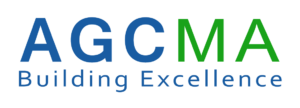
WHAT'S NEXT IN TECHNOLOGY: Using Technology to Streamline Contract Review and Project Performance.
Voluminous and divergent construction contracts will not go away in the coming years. As contractors, we try to use our own contract templates, but often our customers require different paper using heavily edited standard agreements (AIA, ConsensusDocs, EJCDC, etc.) or their own manuscript agreements. While there is no continuity in how these agreements are organized or what terms they may contain, there are consistent provisions that contractors need to review for each contract including but not limited to, indemnity, waiver of consequential damages, pay-if-paid / pay-when-paid, limitations on liability, liquidated damages, delegation of design, payment terms, and notice requirements. Many of our members have their own practice manuals/policies as to such critical terms, including their “walk away” terms. But, how are those critical terms efficiently located? Does your counsel or contracts manager read the entire 40+ page, single spaced, 10 font contract from start to finish and flag them, wherever they may be scattered through the document? Is that the best way? Also, once you execute the contract, what steps are taken to guarantee the project managers, superintendents, and other team members know about those critical terms and follow them?
Bond Brothers and Commodore Builders have been early adopters of construction contract review software called Document Crunch® to address these concerns. Specifically, they use this platform to quickly identify contract risk, standardize contract review, and give their project teams a computer generated outline which allows them to succeed in the performance of the project per the contract’s terms. Our speakers will demonstrate what the software looks like, how they navigate it, and the output it produces to streamline risk assessment, contract review, negotiation, and project team awareness. Computer assisted review of construction contracts is one of many growing ways in which contractors of all size will use technology for risk and project management in the future.
Panelists: Paul M. James, Chief Risk & Legal Officer, BOND Brothers, Inc.
Michael P. Roche, General Counsel, Commodore Builders
Amanda Finnerty, Director of Technology & Process Improvement, Commodore Builders
Moderator: Tom Dunn, Pierce Atwood LLP
